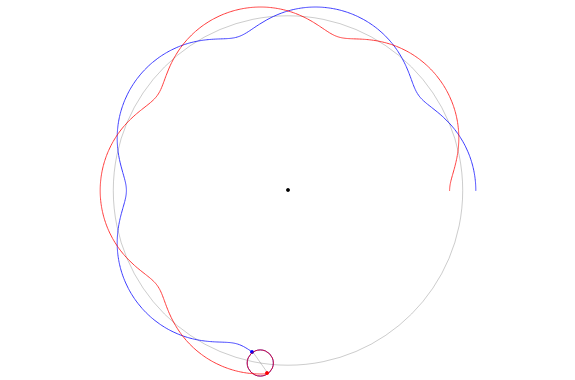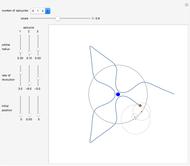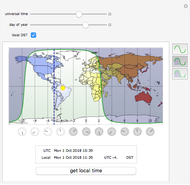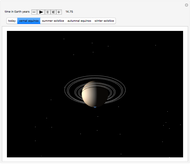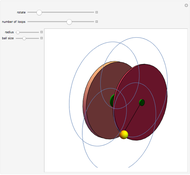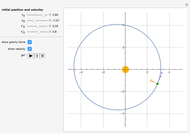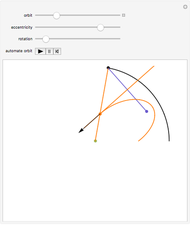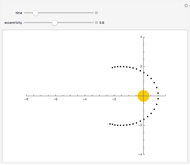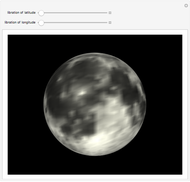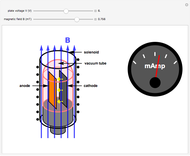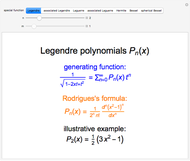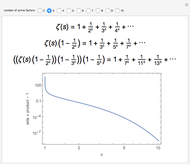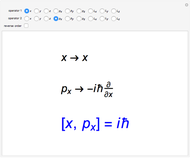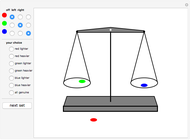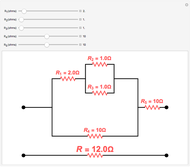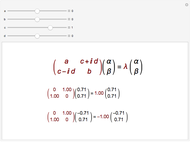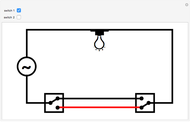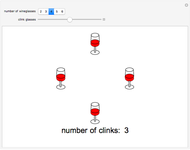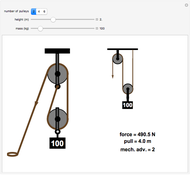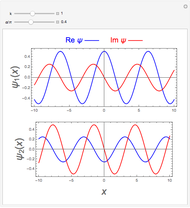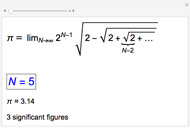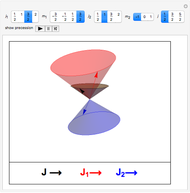Epicycles Revisited; Convexity of Lunar Orbit about the Sun

Requires a Wolfram Notebook System
Interact on desktop, mobile and cloud with the free Wolfram Player or other Wolfram Language products.
Kepler's laws of planetary motion in the 17th century superseded the Ptolemaic system of epicycles to account for the detailed motions of the planets. Generalizations of epicycloids, called epitroichoids, still do occur, however, in the description of relative planet-moon motions as their barycenters (centers of gravity) follow Keplerian orbits around the Sun.
[more]
Contributed by: S. M. Blinder (May 2012)
Open content licensed under CC BY-NC-SA
Snapshots
Details
The three-body Sun-Earth-Moon problem can be described by the Lagrangian

where the Sun is taken as the origin of the coordinate system and is thus considered stationary. Here  represents the gravitational constant,
represents the gravitational constant,  the solar mass,
the solar mass,  the lunar (or other moon) mass,
the lunar (or other moon) mass,  the Earth (or other planetary mass), and
the Earth (or other planetary mass), and  ,
,  ,
,  the three interbody distances. Because of the great disparity in masses and in distances, an accurate simplification of the problem is possible. For the Sun-Earth-Moon system,
the three interbody distances. Because of the great disparity in masses and in distances, an accurate simplification of the problem is possible. For the Sun-Earth-Moon system,  ,
,  , and
, and  . The Lagrangian is well approximated by
. The Lagrangian is well approximated by
 ]
]
where  is the distance from the Sun to the Earth-Moon barycenter (
is the distance from the Sun to the Earth-Moon barycenter ( ) and
) and  . The simplest case is when both orbital motions are circular, with angular velocities
. The simplest case is when both orbital motions are circular, with angular velocities  ("annual") and
("annual") and  ("monthly"). To a fair approximation, there are 13 lunar months per solar year:
("monthly"). To a fair approximation, there are 13 lunar months per solar year:  .
.
The thumbnail graphic for this Demonstration shows epichoroidal orbits for a hypothetical twin planet around some other star, in which a planet and its moon are of equal mass.
Snapshot 1: a qualitative representation for a planet with a very massive moon; for example Pluto's moon Charon has approximately 11.6% of the mass of the planet
Snapshot 2: the Sun-Earth-Moon system drawn to scale, with  (average Sun-Earth distance is about 400 times average Earth-Moon distance) and
(average Sun-Earth distance is about 400 times average Earth-Moon distance) and  (lunar months per year); with higher magnification, it can be seen that the Moon's orbit around the Sun is a distorted 13-sided polygon that is a convex figure
(lunar months per year); with higher magnification, it can be seen that the Moon's orbit around the Sun is a distorted 13-sided polygon that is a convex figure
Snapshot 3: a toy model of the Sun-Earth-Moon system, with  and
and  , in which the requisite inequality for convexity is fulfilled and much easier to verify
, in which the requisite inequality for convexity is fulfilled and much easier to verify
References
[1] N. S. Brannen, "The Sun, the Moon, and Convexity," The College Mathematics Journal, 32(4), 2001 pp. 268–272.
[2] L. Hodges, "Why the Moon's Orbit is Convex," The College Mathematics Journal, 33(2), 2002 pp. 169–170.
Permanent Citation
